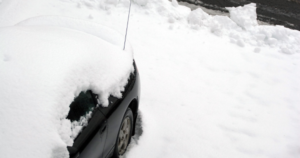Paleontologists Rejoice: Fossil of 66 Million Year Old Dino Found in Colorado

 For some, a smile is incredibly important in terms of meeting people and making friends. For instance, according to a survey by the American Academy of Cosmetic Dentistry, 99.7% of adults believe a healthy smile is socially important.
For some, a smile is incredibly important in terms of meeting people and making friends. For instance, according to a survey by the American Academy of Cosmetic Dentistry, 99.7% of adults believe a healthy smile is socially important.
Dinosaurs, on the other hand, viewed teeth a bit differently. And one interesting find in a Colorado town has the potential to reveal millions of years of secrets for one specific type of dino, all due to their teeth.
Triceratops dinosaurs were believed to have weighed upwards of six tons, were about 10 feet tall and about 30 feet long. They typically had quite large heads, but the Colorado dinos had unusually small heads. Until recently, scientists weren’t sure why this why this was.
Earlier this month, construction workers were digging in Thorton, Colorado when they stumbled upon a rare find — the bones and full skull of a triceratops dinosaur. According to the Denver Museum of Nature and Science curator of dinosaurs Joe Sertich, the fossil is approximately 66 million years old.
The amazingly preserved head and shoulder bones were located near the Colorado Front Range. What’s interesting is that these bones are actually disaggregated, which tells the paleontologists that the dino may have died from natural causes and then a predator may have come by and eaten large chunks of the carcass. While only the head has been completely removed, excavators hope to find the rest of the body as they keep exploring.
But even if they cannot, there is hope that looking at this dino’s teeth can help the researchers figure out a huge mystery — why dinos in Colorado have smaller heads than anywhere else in the world.
Sertich explained to the Washington Post that Colorado dinos have heads that are about three times smaller than average, compared to dinos in other states like North Dakota and Montana. He described the importance of this find:
“Even though we have hundreds of triceratops from the American West, we only have three good skulls. And this might be one of the best skeletons to tell us why Denver triceratops are smaller than all of their cousins everywhere else.”
The majority of fossils found in this area of Colorado are of wooly mammoths and camels, making this find a paleontologist’s dream come true.





